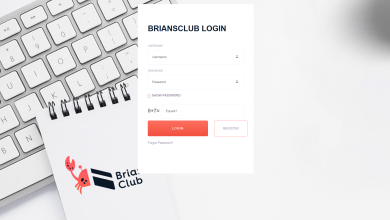Dreaming of bringing your unique app idea to life? You’re not alone in this journey. With the ever-advancing world of technology, tools like Flutter have emerged as heroes, making it simpler for dreamers like you to create their own apps. Partnering with the right mobile app development company in UK and harnessing the power of Flutter can turn your dream into reality.
So, buckle up and embark on this enchanting voyage into the realm of Flutter, where app creation is limited only by your imagination!
What is Flutter?
First things first, what exactly is Flutter? Flutter is a free and open-source tool created by Google for building mobile apps. What’s cool about Flutter is that you write your app’s code just once, and it can run on both Android and iPhone devices. Imagine writing a story that can be read in two languages without having to translate it – that’s Flutter for app development!
Key Steps to Build Mobile App Using Flutter
Setting Up Your Development Environment
Before your creative journey can commence, you must meticulously prepare your development environment. Here’s a detailed breakdown of the crucial steps:
- Installing Flutter: Begin by visiting the official Flutter website and meticulously follow the installation instructions tailored to your specific operating system.
- Selecting an (IDE): The next vital step involves selecting an Integrated Development Environment (IDE) that suits your preferences. You have the choice of renowned IDEs such as Android Studio, Visual Studio Code, or IntelliJ IDEA. Ensure that you install the Flutter and Dart plugins relevant to your chosen IDE.
- Verification of Installation: To guarantee a smooth development experience, open your terminal and execute the Flutter Doctor command to verify that Flutter is correctly installed and that all essential dependencies are satisfactorily met.4
Creating a Brand-New Flutter Project
With your development environment primed and ready, it’s time to usher in your app’s inception. Follow these meticulous steps to bring your idea to life:
- Launch Your IDE: Open your chosen IDE and initiate the process by clicking on “Create New Flutter Project.”
- Configuration of Your Project: Bestow a name upon your project and specify the location where you wish to save it. Additionally, you can designate your target platform, Android, iOS, or both.
- Project Structure: Flutter, in its brilliance, will fabricate a project structure replete with predefined directories and initial code snippets, providing you with a solid foundation to commence your creative journey.
Designing Your App’s Captivating User Interface
An exceptional user interface is the cornerstone of a memorable app. Flutter simplifies the process of crafting your app’s UI through a variety of widgets. Here’s a comprehensive breakdown of what you need to accomplish:
- Selection of a Design Pattern: Commence your design journey by selecting an appropriate design pattern for your app. Flutter offers Material Design and Cupertino (for iOS-style UI) as popular options.
- Leveraging Widgets: Flutter boasts a vast arsenal of widgets that cater to your UI component needs, encompassing buttons, text fields, images, and more. Customize these widgets meticulously to harmonize with your app’s aesthetic.
- Layout Organization: Use Flutter’s versatile layout widgets, including rows, columns, and containers, to orchestrate your UI elements, creating a visually appealing and intuitive user experience.
- Incorporation of Interactivity: Breathe life into your app by implementing user interactions through event handlers and seamless navigation between screens.
Crafting Your App’s Logic
With the foundation of your UI firmly in place, it’s time to infuse life into your app by writing the logic that governs its behavior. Here are the key considerations:
- Data Management: Deliberate on how you intend to store and manage data within your app. Options range from local storage to databases and remote API connections.
- State Management: Flutter offers a plethora of state management solutions, including Provider, Bloc, or MobX, which empower you to manage your app’s state effectively.
- Feature Implementation: Roll up your sleeves and start coding to materialize the features and functionalities your app demands, whether it involves user authentication, data retrieval, or in-app purchases.
Rigorous Testing of Your App
In the realm of mobile app development, testing reigns supreme. It’s imperative to ensure that your app operates flawlessly and remains free from pesky bugs. Here’s a comprehensive approach:
- Manual Testing: Thoroughly scrutinize your app by employing it across various devices and under diverse conditions to detect and resolve issues.
- Automated Testing: Establish automated tests to identify any potential regressions as you continue enhancing your app.
- User Testing: Consider conducting user testing sessions with a select group of individuals to garner invaluable feedback and make necessary improvements.
Preparation for Deployment
As your app nears completion, it’s time to prepare for its grand debut. Pay meticulous attention to the following aspects:
- Icon and Splash Screen: Craft an eye-catching app icon and an engaging splash screen that resonates with your brand’s identity.
- App Store Accounts: If your target includes app stores, embark on creating developer accounts on both the Google Play Store and the Apple App Store to pave the way for your app’s submission.
- Building and Packaging: Harness the power of Flutter’s tools to meticulously build and package your app, ensuring it is primed and ready for deployment.
The Grand Debut: Publishing Your App
Finally, it the time to unveil your creation to the world. Here’s how to make that dream a reality:
- Google Play Store: If your sights are set on the Android platform, meticulously adhere to Google’s guidelines for submitting your app to the Play Store.
- Apple App Store: For those targeting the iOS ecosystem, follow Apple’s meticulous guidelines for submitting your app to the App Store.
- Marketing and Promotion: Initiate a comprehensive marketing and promotion strategy, leveraging various channels to ensure your app reaches and resonates with your target audience.
Wrapping Up
You’ve successfully navigated the steps of Flutter mobile app development. Remember that practice makes perfect, so don’t hesitate to experiment with different widgets, features, and designs. As you continue to refine your skills, consider joining the vibrant Flutter community, where developers share knowledge and support each other.
If you find yourself overwhelmed or if you’re looking to expedite your app development process, consider partnering with a mobile app development company. Their expertise can enhance your project and bring it to life more efficiently.
Moreover, flutter empowers developers to create high-quality, cross-platform apps with ease. Embrace the learning process, stay curious, and enjoy the journey of building your own mobile apps!





